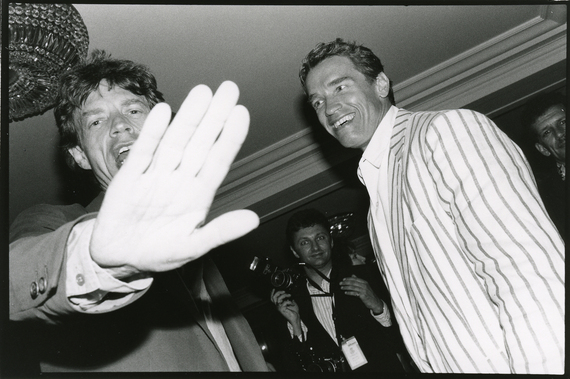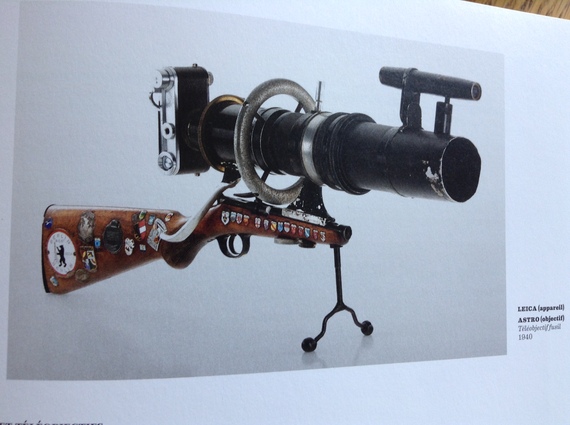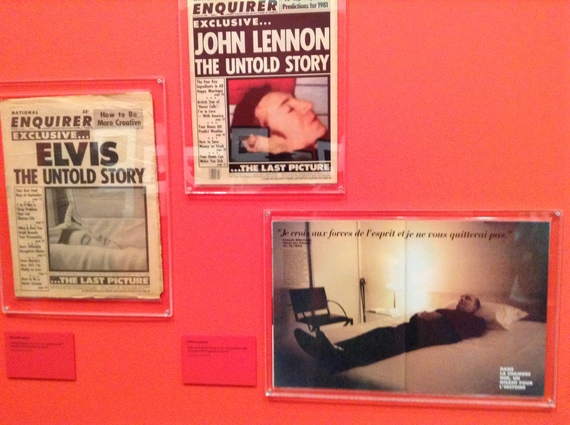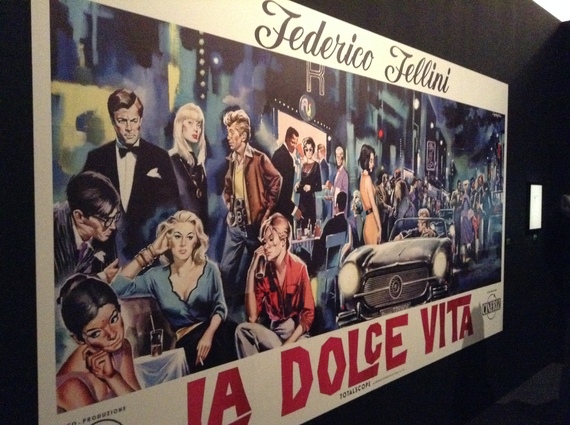Was it rape?
Or was it art? And when?
A strange and strangely provocative spring exhibit on the century long history of Star Photography and photographers -- or Paparazzi as Frederico Fellinni named them -- has taken over the Pompidou Museum of Modern Art's Metz branch an hour and a quarter east of Paris.
Paparazzi? Why would I -- or you -- care about these scabrous scum who devote their lives to sleaze, tracking celebrities and publishing their images in, at best, People or Paris Match or more often in rags like National Enquirer? One answer, as the Pompidou exhibit points out, is that in a world of failing print journalism, the Paparazzi rags are among the few that still thrive. More important is how Paparazzi photography has changed how we all see and feel about ourselves, how their wide-angle and close-up photo-technology has changed the nature of visual art the globe over, how the subjects of the Paparazzi -- actors, princesses and politicians -- have increasingly adopted celebrity photography, and how contemporary visual artists have forced all of us, in the age of Facebook Pix, to question whether we still possess any interior soul or reality.
Start with rape and other sorts of violence, not least the death of Diana on August 31, 1997 in a Paris car crash when a flock of Paparazzi were trailing her in hot pursuit. As Pompidou curator Clément Chéroux notes, the Paparazzi have overwhelmingly been aggressive men and their targets have overwhelmingly been women. The blinding flashes, the aural clamor, the Paparazzi's blank checks to hire hovering helicopters and rent surveillance apartments, Clement says, constitute patent aggression if in a less lethal form than the one that ended Diana's life.
But the Paparazzi story doesn't stop there. The infamous series of images published by Playmen and Hustler of the nude Jackie Kennedy in her Scorpio retreat, presented in the show, were certainly shameless invasions of her privacy. But the photos of Liz Taylor and Richard Burton in their limousines? Of Britney Spears spreading her slipless legs bare to the shaved off bush as she leaves her limo? Of Paris Hilton displaying her bare nipple at the beach? Who, as cultural tides shifted, was using whom?
By the time we arrive at the tacky presidency of Silvio Berlusconi, the entire game has changed as the hair-transplanted commander of Forza Italia plainly invites the Paparazzi to trail him in his bathrobe -- just as the world's current autocrat-in-chief, Vladimir Putin, bares his breast and biceps on horseback and or with fishing pole for a pre-selected band of Paparazzi. Hundreds of images fill the walls of the Pompidou's third floor to document their histories and ours as the relentless spectators of life, sex and death -- even as we ordinary mortals take on the gestures of the stars placing hats and hands out, celebrity-style, to draw attention to ourselves. Doubtless many visitors will ask why a major museum would bother with such patently cheesy images -- to which curator Clément Chéroux answers simply that art museums can no longer pretend just to lecture their public about what is a masterwork: "I wanted to open up the idea of what photography is and what it can do and not leave photographic art solely in the terrain of what Diane Arbus does. We should not lecture. We should provoke our visitors to question what they see."
Photography, declared Honoré de Balzac toward the end of his life, risks nothing less than the destruction of the soul, as image by image it peels away our surfaces as like an onion, until we are left with nothing inside, graveyard ghosts who have been sucked dry by the machinery of modern marketing. The Paparazzi, this show argues, are simply our hirelings in this desperate game of distraction and self promotion.
Or are they? Increasingly fine photography collectors have come to treasure the refined skill they applied to their visual documentation. And a growing number of artists have taken the flat emptiness of their images, itself a product of the massive wide-angle lenses attached to their cameras and turned it inside out. Among the best on show are the many pieces made by Alison Jackson, a British artist, who has hired celebrity look-alikes of stars and politicians, staged them in plausible settings and then made grainy on-the-run style candid images demanding that we as viewers excavate the myths we have created for ourselves.





